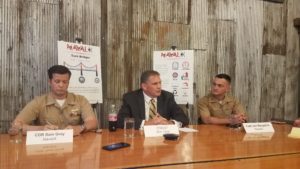
Navy officials have been able to use the NavalX Tech Bridges to help produce equipment to deal with the COVID-19 pandemic and explained both initial successes and how they measure success going forward. During a May 1 announcement that the Navy was adding six new Tech Bridges, NavalX Tech Bridge Director Cmdr. Sam Gray explained in recent months they worked together to produce and organize personal protective equipment (Defense Daily, May 12). “We were able to leverage the Tech Bridge…

 By
By 











